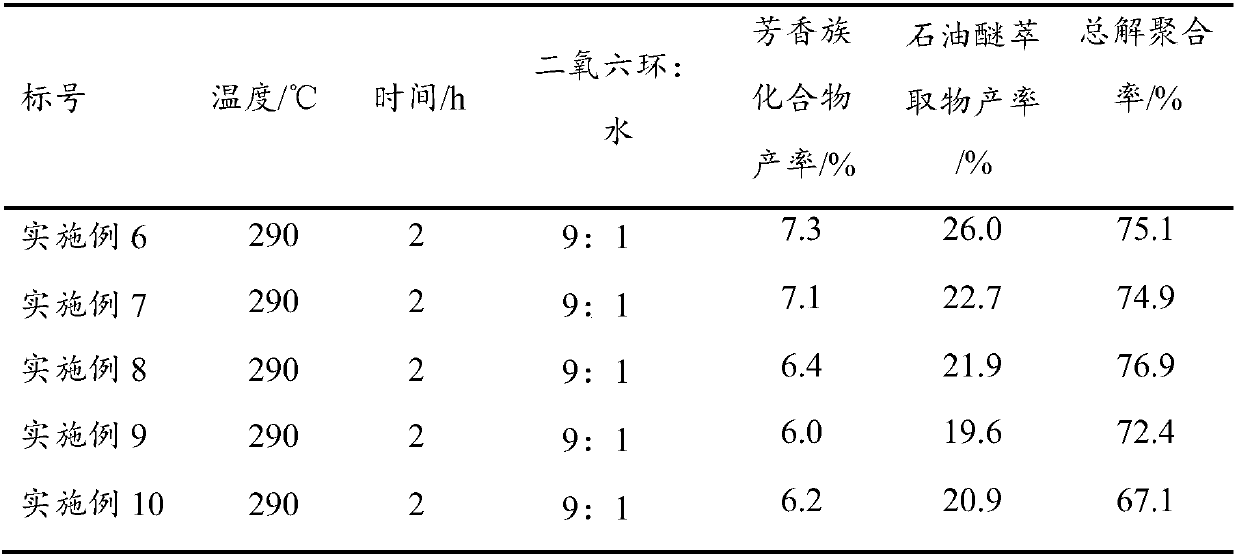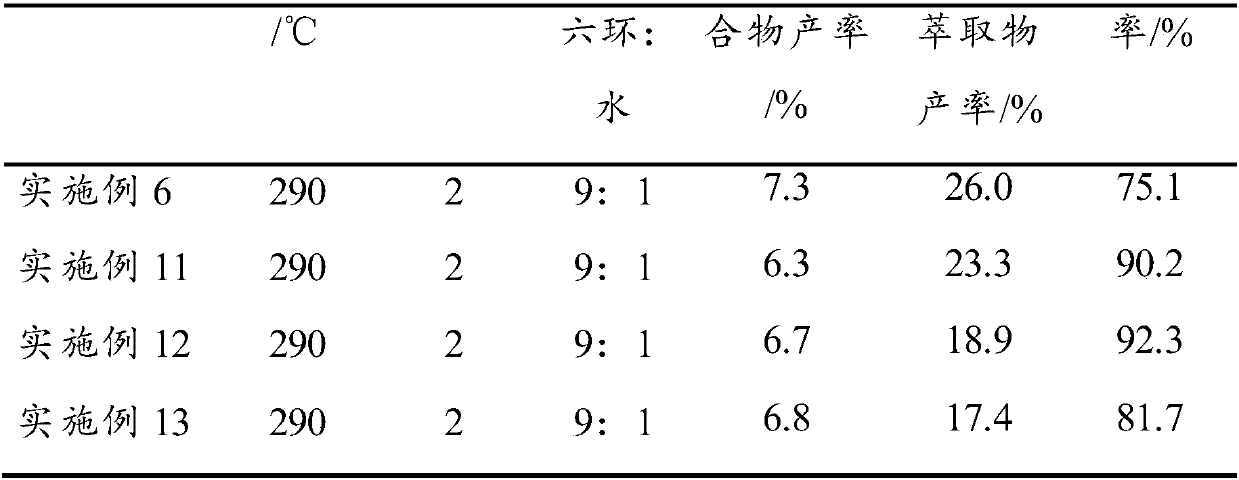Method for catalytically depolymerizing lignin
A catalytic depolymerization and lignin technology, applied in the field of biomass catalytic conversion, can solve the problems of difficult separation and purification, harsh reaction conditions, harsh depolymerization conditions, etc., achieve good hydrothermal stability, complete reaction, and increase conversion rate Effect
- Summary
- Abstract
- Description
- Claims
- Application Information
AI Technical Summary
Problems solved by technology
Method used
Image
Examples
Embodiment 1
[0053] Take a certain amount of tantalum oxide, molybdenum oxide and lithium carbonate, put them in a mortar and grind them evenly, then put them into a porcelain boat, and calcinate at 600°C for 24 hours. The molar ratio of tantalum oxide, molybdenum oxide and lithium carbonate is 1:2:2 . Put the calcined catalyst into a 1mol / L nitric acid solution for shaking and impregnation, shake it gently at room temperature for 2 weeks, replace the lithium ions between the catalyst layers with hydrogen ions, then centrifuge, wash the catalyst with deionized water, and wash the catalyst at 70 Dry in an oven at ℃, and grind to get the layered catalyst HTaMoO in the form of light yellow powder 6 , the preparation of the catalyst is complete.
Embodiment 2
[0055] Take a certain amount of niobium oxide, molybdenum oxide and lithium carbonate, put them in a mortar and grind them evenly, then put them into a porcelain boat, and calcinate at 580°C for 24 hours. The molar ratio of niobium oxide, molybdenum oxide and lithium carbonate is 1:2:2 . Put the calcined catalyst into a 1mol / L nitric acid solution for shaking and impregnation, shake it gently at room temperature for 2 weeks, replace the lithium ions between the catalyst layers with hydrogen ions, then centrifuge, wash the catalyst with deionized water, and wash the catalyst at 70 Dry in an oven at ℃, and grind to obtain a layered catalyst HNbMoO in the form of light yellow powder 6 , the preparation of the catalyst is complete.
Embodiment 3
[0057] Take a certain amount of tantalum oxide, tungsten oxide and lithium carbonate, put them in a mortar and grind them evenly, then put them into a porcelain boat, and calcinate at 900°C for 24 hours. The molar ratio of tantalum oxide, tungsten oxide and lithium carbonate is 1.1:2:2 . Put the calcined catalyst into a 1mol / L nitric acid solution for shaking and impregnation, shake it gently at room temperature for 2 weeks, replace the lithium ions between the catalyst layers with hydrogen ions, then centrifuge, wash the catalyst with deionized water, and wash the catalyst at 70 Dry in an oven at ℃, grind to get the layered catalyst HTaWO in the form of light yellow powder 6 , the preparation of the catalyst is complete.
PUM
 Login to View More
Login to View More Abstract
Description
Claims
Application Information
 Login to View More
Login to View More - R&D
- Intellectual Property
- Life Sciences
- Materials
- Tech Scout
- Unparalleled Data Quality
- Higher Quality Content
- 60% Fewer Hallucinations
Browse by: Latest US Patents, China's latest patents, Technical Efficacy Thesaurus, Application Domain, Technology Topic, Popular Technical Reports.
© 2025 PatSnap. All rights reserved.Legal|Privacy policy|Modern Slavery Act Transparency Statement|Sitemap|About US| Contact US: help@patsnap.com



